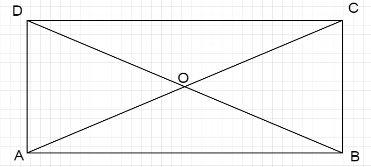The Dancing Diagonal of Thillana
Few parts of society have this misconception about the teaching methodology; I have often heard it from many people "Teachers do not update themselves with the new information as they are busy teaching the same chapters again and again for many years." It's not right, and blaming teachers for this doesn't make any sense in my perspective. In a small span of my teaching career, I had to teach the same chapter repeatedly in many classes. Many a time, I had students running to me and asking me to explain the same section again till they understood it.
One such chapter I was requested to teach repeatedly was Permutation and combination. Somehow this topic is a nightmare to many students even today. Schooling the same section in a loop gives a new idea to explain a specific problem differently. Every time, I had to explain the same concept with a recent example and explanation so that students did not forget it and understand it better.
It was July 2017. The topics for the day were P and C; that's what students called it. I made sure my preparation was more than enough to explain all the crucial and vital concepts in the most natural way possible by me. One thing I followed was not making the students memorise the formulae; instead, I explained the logical analysis without deriving it.
The day's topic was" Permutation and combinations in a geometrical figure. " After a brief introduction, I questioned the entire class, "what is a diagonal?". To my surprise, I did not find the answer I was expecting from the young minds. I was even shocked to listen to the wrong answers from students, which I was not excepting. "The line which connects the opposite vertices" was the answer I received from everyone. I didn't want to disappoint the students. Hence I did not acknowledge the solution. Instead, I smiled. I just sketched a triangle on the board and asked everyone to draw a diagonal to it. The class busted out in a laugh, realising their mistake. "Any line that goes from one corner to another corner, but it is not an edge is called diagonal," was my answer to the students. I knew still with this information, I would not be able to convey the exact logic that helps solve the questions of Permutation and the combination of geometrical figures.
Many mathematics textbooks provide the formula to find the total number of diagonals in a polygon = ncr – n. Somehow, I was against teaching this formula as I felt it would not help students analyse the polygons; instead, it will just be a memory-based skill. Moreover, my primary intention as a teacher was to make students understand the exact definition of diagonal, which they should never forget.
Thillana is an inseparable part of any Bharta Natyam class. Thillana is the last dance performed by dancers at the concert's end. The choreography of the korvai, just before the Anupallavi, is interwoven so that it starts with the diagonal formation by the dancer.
The diagram represents the typical movement at the beginning of the last korvai in Thillana. At the end of the second korvai, the dancer will be at point A which acts as the starting point of the third korvai. To form a diagonal, a dancer should reach only point C from A. Reaching either point B or point D will not help create the diagonal line. That's where the logic is embedded. That's where the correct definition of the diagonal line is hidden.
Observe the following diagram

Consider a point A; the diagonal line cannot be formed by joining either B or D also A. The movement starting and ending at A itself will not result in a diagonal. It will be a circular movement. Hence Among all the four possible points available for a dancer to reach. They should not reach 3 points, i.e., B, D, and A. Thus for a specific point in a geometrical figure to form a diagonal, three points can never be utilised to create a diagonal; among the available 'n' points, the dancers can use only (n-3) positions to form a diagonal. Extending the logic to polygons of 'n' sides, if there are n points, then there will be (n-3) diagonal lines for each vertex. Hence the total number of diagonals will be n*(n-3). The combination n*(n-3) represents all the possible combinations of diagonal lines twice. A diagonal line from point A to point B will be seen as another diagonal line when viewed from point B to point A. Hence the total number of possible lines should be divided by two. Therefore, the total number of the diagonal line in a polygon is given by n*(n-3)/2.
A third korvai of Thillana helped me explain the exact definition of a diagonal line as "A line drawn to any corner other than the neighbours and to itself.




The drive and passion of how you explained about diagonals with dance upholds our vibes for happy learning of every concepts in nature.
ReplyDeleteThank you so much Aishwarya.
Delete